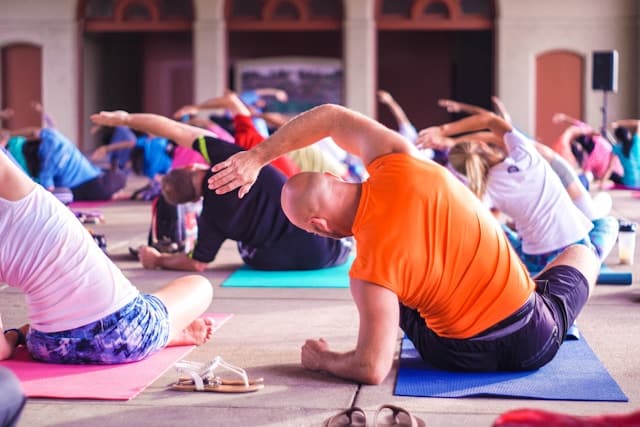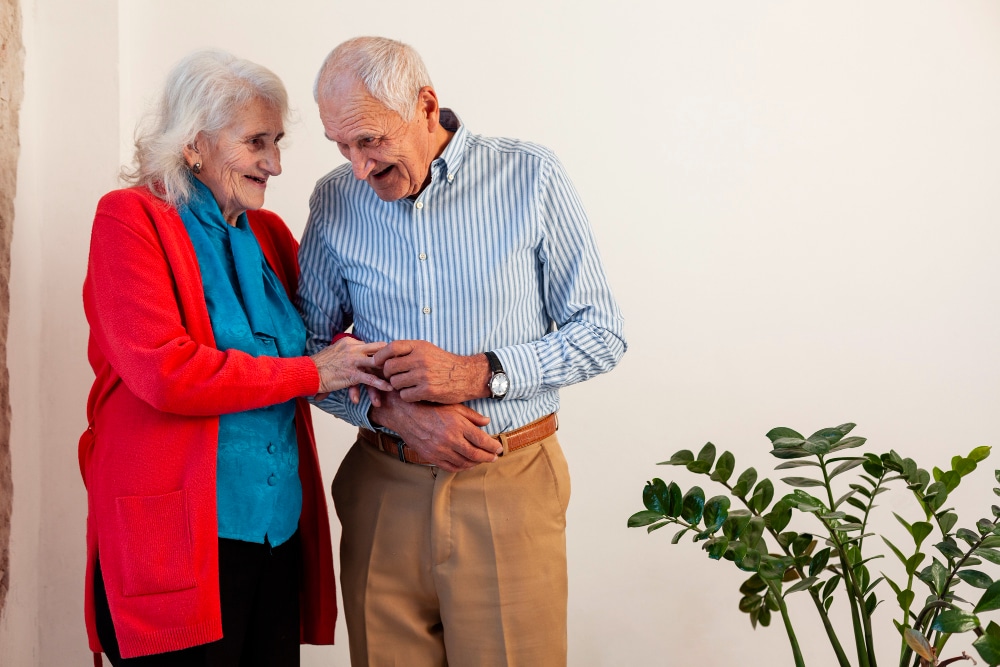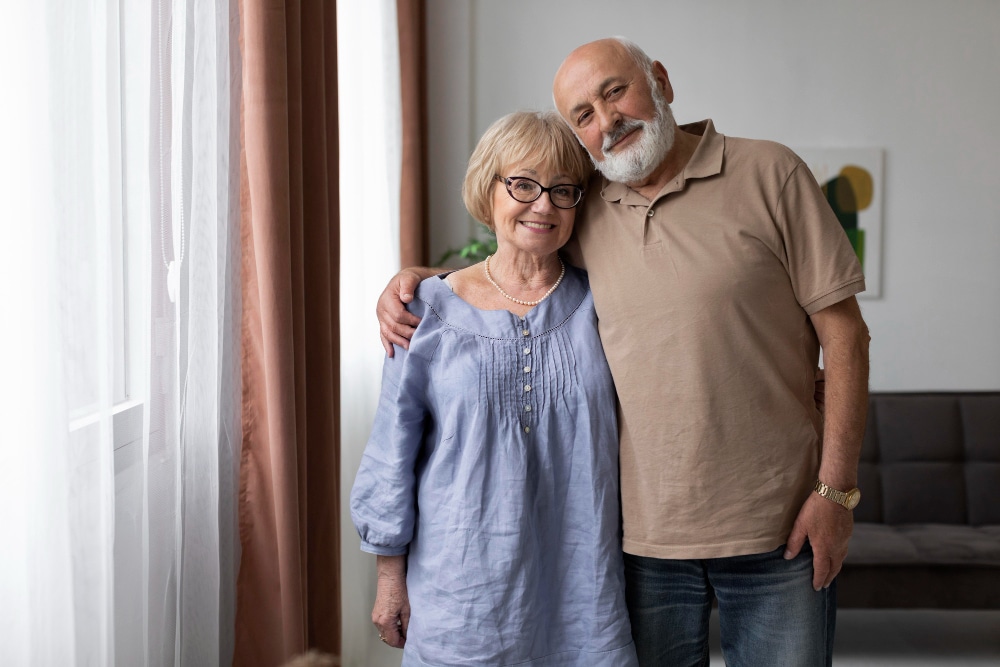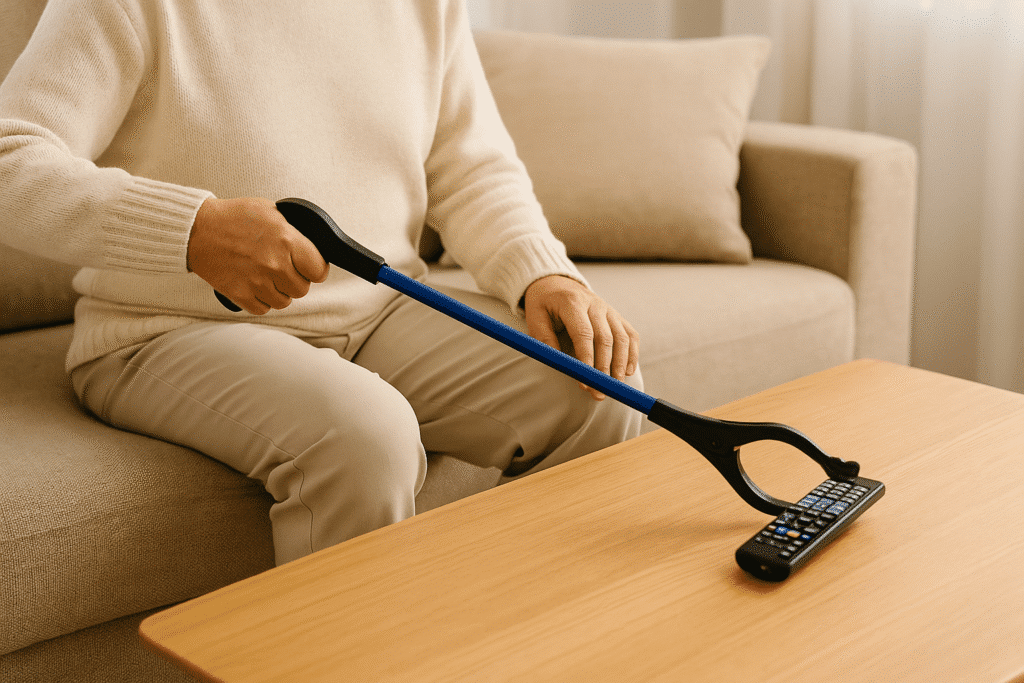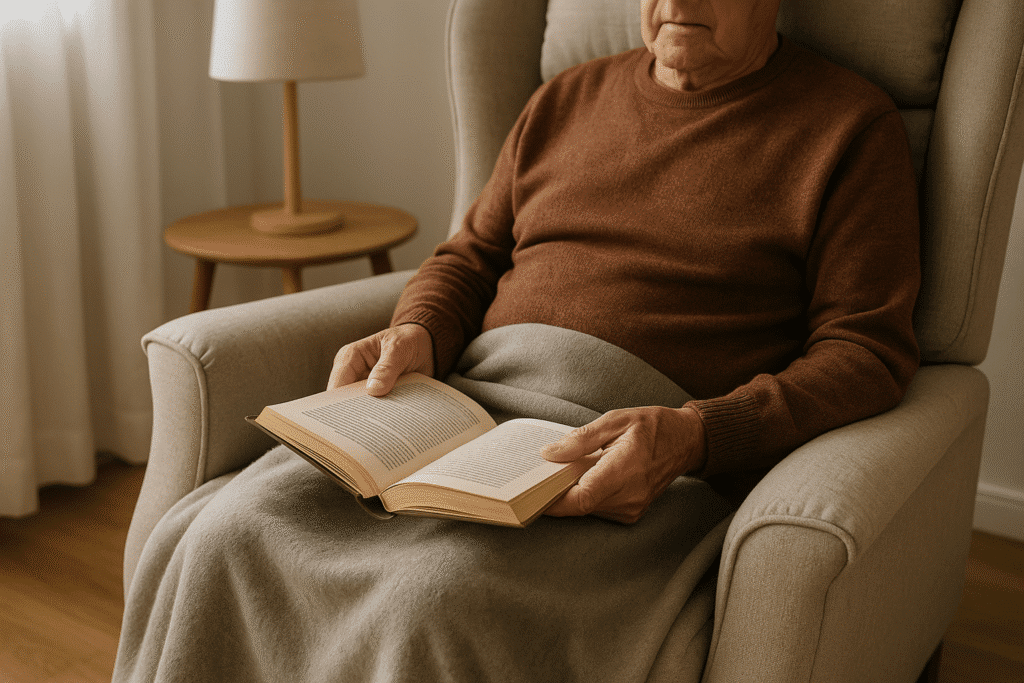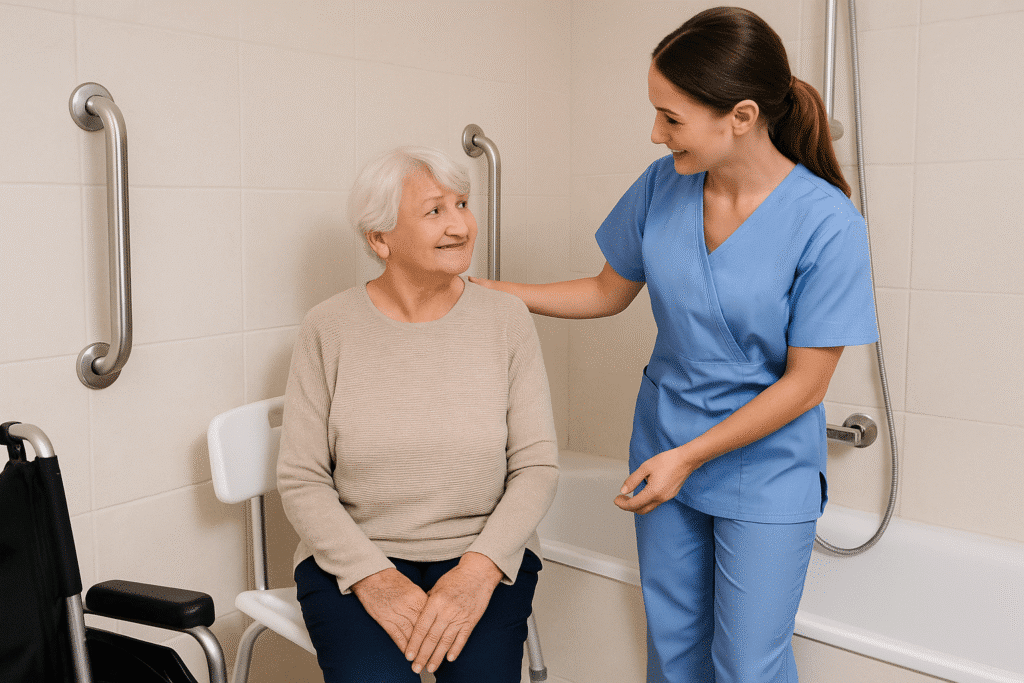Many older adults deal with sitting pain from posture issues, stiff joints, or age-related changes.
Learning how to relieve sitting pain for seniors starts with simple adjustments like supportive chairs, regular movement, and gentle exercises for lasting comfort.
Key Takeaways:
- Use a supportive chair and cushions to reduce pressure on the spine and hips.
- Take breaks every 30 to 60 minutes to stand, stretch, and move.
- Gentle exercises like seated twists or hip marching keep joints flexible.
- Heat, cold, massage, and physical activity can ease discomfort naturally.
- See a doctor if pain persists, worsens, or affects daily activities.
Why Seniors Experience Sitting Pain
Seniors often experience sitting pain because aging joints, weak muscles, and poor posture put extra pressure on the spine, hips, and lower back. Conditions like arthritis, disc degeneration, and reduced flexibility also make long sitting periods more uncomfortable.
As we age, natural wear and tear in the joints reduces cushioning and increases stiffness. This means even simple daily activities, like sitting to read or watch TV, can trigger pain more easily.
Seniors are also more likely to sit for long stretches, which limits circulation and causes discomfort in the back, hips, and legs.
Lifestyle factors such as carrying excess weight, using poorly designed chairs, or spending too much time leaning forward at screens can make the problem worse.
Over time, these issues combine to make sitting pain a common but manageable challenge for many older adults.
How to Relieve Sitting Pain for Seniors
Relieving sitting pain is about improving posture, supporting the body with the right tools, and building small daily habits that ease pressure on the back, hips, and joints. Below are ten proven strategies seniors can use for better comfort.
1. Choose a Supportive Chair
The right chair makes a big difference in how comfortable sitting feels. Seniors should use a chair that allows their feet to rest flat on the floor, with knees at a 90-degree angle.
A firm backrest helps maintain spinal alignment, while armrests make standing up easier and safer. Avoid low or overly soft chairs, which can increase strain on the hips and back.
For more options, you can also explore our guide on the best recliners for seniors.
2. Add Cushion or Lumbar Support
A simple cushion can reduce pressure on the tailbone and hips. Lumbar pillows or rolled-up towels support the natural curve of the lower spine, preventing slouching.
Specialized coccyx or gel cushions are especially useful for those who spend long periods sitting, as they distribute weight more evenly.
3. Maintain Proper Sitting Posture
Good posture reduces pain and stiffness. Seniors should sit upright with their shoulders relaxed, chin level, and back fully supported by the chair.
Feet should remain flat on the floor, not dangling. Leaning forward to look at screens or slouching adds pressure on the spine and should be avoided.
4. Take Regular Movement Breaks
Sitting for too long causes stiffness and poor circulation. Seniors should stand up, stretch, or walk around every 30 to 60 minutes.
Even a few minutes of light movement helps ease joint pressure, keeps muscles flexible, and reduces the risk of discomfort building up over time.
5. Try Gentle Chair Exercises
Simple exercises can improve mobility and reduce stiffness.
- Chest Stretch: Pull shoulders back and gently open the chest to relieve tension.
- Seated Twist: Slowly turn the upper body side to side to keep the spine flexible.
- Hip Marching: Lift one knee at a time while holding the chair to strengthen hips and improve circulation.
These movements are safe, easy, and can be done while sitting.
6. Use Heat or Cold Therapy
Applying a warm heating pad helps relax tight muscles and ease stiffness. Cold packs, wrapped in a cloth, reduce swelling and numb sharp pain.
Seniors can try alternating between heat and cold to find what works best for their type of discomfort.
7. Consider Massage or Mobility Aids
Gentle massage improves circulation and reduces stiffness in sore areas. A handheld massager or even self-massage with a tennis ball can bring relief.
In addition, using footrests, recliners, or adjustable chairs helps ease pressure on the lower back and legs, making sitting less painful.
For added support with movement, some seniors may also benefit from using walkers to reduce strain when getting up or moving around.
8. Stay Physically Active
Daily activity strengthens muscles and keeps joints flexible. Walking, swimming, or practicing tai chi can reduce stiffness that often makes sitting painful.
Stronger core and leg muscles provide better support for the spine, lowering the risk of discomfort during long sitting periods.
9. Watch Your Weight and Diet
Excess weight places more pressure on the spine, hips, and thighs. Maintaining a healthy weight helps relieve sitting discomfort.
Seniors may also benefit from an anti-inflammatory diet rich in omega-3 fatty acids, leafy greens, and whole grains, which support joint health and reduce chronic pain.
10. Make Ergonomic Adjustments at Home
Simple home changes can improve comfort. Raising computer screens to eye level prevents leaning forward. Standing desks or adjustable tables reduce prolonged sitting.
Removing tripping hazards such as loose rugs or cords also supports safer movement, which is especially important for seniors managing both sitting pain and fall risks.
When to See a Doctor
Seniors should see a doctor for sitting pain if it is persistent, worsening, or accompanied by symptoms such as numbness, tingling, weakness, or difficulty walking.
These signs may point to underlying conditions like nerve compression, arthritis flare-ups, or spinal problems that need medical attention.
Even if the pain feels mild, it is important to seek care when it interferes with daily activities, disrupts sleep, or does not improve with home remedies such as posture changes, cushions, or light exercise.
A healthcare professional can rule out serious causes, suggest personalized treatments, and recommend physical therapy, medications, or other interventions to prevent the problem from getting worse.
Final Words
Sitting pain is a common challenge for seniors, but it does not have to limit comfort or independence.
With the right chair, supportive cushions, better posture, regular movement, and gentle exercise, many older adults can reduce discomfort and enjoy daily activities more easily.
Small lifestyle adjustments, along with staying active and maintaining a healthy weight, go a long way in protecting joint health and easing pain.
And when symptoms persist or worsen, consulting a doctor ensures the right care and peace of mind.
FAQs
What is the best cushion for seniors with sitting pain?
Coccyx cushions and lumbar support pillows are among the best options, as they relieve pressure on the spine and tailbone while improving posture. Memory foam and gel cushions also adapt to the body for added comfort.
How often should seniors take breaks from sitting?
Seniors should aim to stand, stretch, or walk every 30 to 60 minutes. Frequent breaks improve circulation, reduce stiffness, and prevent pain from building up.
Does walking help reduce sitting pain?
Yes, walking strengthens the muscles that support the spine and hips, improves circulation, and reduces stiffness from prolonged sitting. Even short walks can bring noticeable relief.
Is sitting pain a sign of a serious health issue?
Sometimes. While many cases are due to posture or stiffness, persistent pain with numbness, weakness, or difficulty walking can signal a more serious condition that should be checked by a doctor.
Mark has over 10 years of hands-on experience in senior care. He founded ElderSavvy to provide honest, easy-to-follow advice on tools that support comfort, safety, and independence. Mark oversees all content and product reviews, guided by insights from caregivers, health professionals, and real-life use.




